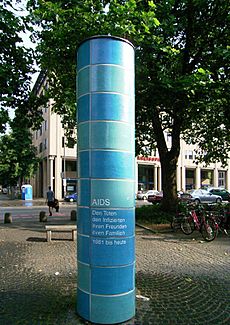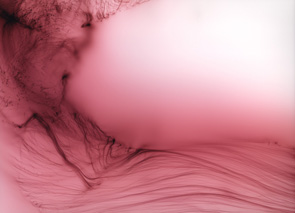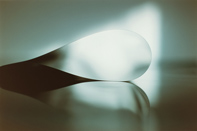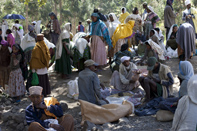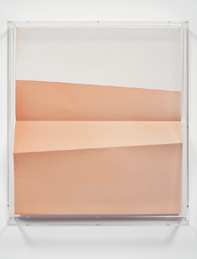Wolfgang Tillmans facts for kids
Quick facts for kids
Wolfgang Tillmans
|
|
|---|---|
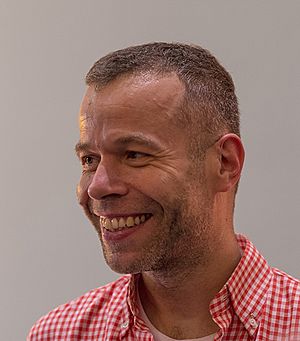
Tillmans in 2013
|
|
| Born | 16 August 1968 |
| Education | Bournemouth and Poole College of Art (Now AUB) |
| Known for | Photography |
| Awards | Turner Prize 2000 Culture Award 2018 |
Wolfgang Tillmans (born 16 August 1968) is a famous German photographer. He is known for taking pictures of many different things. He looks closely at the world around him. He also explores how photography itself works.
Tillmans was the first photographer to win the Turner Prize. This is a very important art award. He was also the first non-British person to win it. His work has been shown in big art museums. These include the Museum of Modern Art and Tate Modern. In 2023, Time magazine named him one of the world's most influential people. He lives in Berlin and London.
Contents
Early life and education
Wolfgang Tillmans was born in 1968 in Remscheid, Germany. When he was 14 to 16 years old, he visited museums. There, he saw art by famous artists like Gerhard Richter and Andy Warhol. These artists inspired him early on.
In 1983, he visited England as an exchange student. He learned about British youth culture. He also discovered local fashion and music magazines. During high school, he became friends with Alexandra Bircken and Lutz Huelle.
From 1987 to 1990, Tillmans lived in Hamburg. He had his first art shows there in 1988. From 1990 to 1992, he studied art in southern England. He attended the Arts University Bournemouth.
Tillmans' photography work
After his studies, Tillmans moved to London. In 1994, he lived in New York for a year. He then moved back to England. Since 2007, he has lived in both Berlin and London. His studio in Berlin is in a modern building. It was designed by architect Max Taut in the 1930s.
Early photos and style
Tillmans first became known for his casual photos of friends. These often looked like quick snapshots. He photographed young people around him. His pictures appeared in magazines like i-D and Spex. This made him famous for showing modern social life.
He was seen as a "documentarian of his generation." However, Tillmans said he wasn't just recording his own life. He wanted to show things that weren't usually seen. About half of his photos are carefully set up. He chooses the clothes and places. He also poses his models. His photos of friends Lutz and Alex are important pictures from the 1990s.
From 1992 to 1994, Tillmans lived in London. He moved to New York in 1994. During this time, he started showing his work more often. He developed a unique way to display his photos. He would pin or tape unframed pictures directly onto gallery walls. He mixed color photos with inkjet prints and magazine clippings. He often arranged them from floor to ceiling. He sees each show as a special art piece.
Seeing the world through pictures
Tillmans' photography grew to include many different types of pictures. He takes portraits, still lifes, and photos of the sky. He also photographs stars, views from above, and landscapes. He is interested in both art and social issues. This includes topics like human connection and identity. Tillmans says, "I take pictures, in order to see the world."
He makes photos for his art shows in different sizes. Some are small, and some are very large. He uses both framed prints and inkjet prints. The inkjet prints can be put directly on the wall. He arranges them carefully, sometimes with photocopies or newspaper clippings. He also displays them in glass cases. He calls these "truth study center" displays.
Tillmans believes all subjects and materials are equally important. He constantly rearranges and questions his work. This helps him avoid making final statements. It allows his photos to be seen in new ways.
In 2009, Tillmans started using digital cameras. Before that, he used an old film camera for over 20 years. By 2012, he only used digital cameras. He said this changed how he thought about photography. He felt the higher detail of digital photos showed how much information is in the world today.
Photo grids
Tillmans has created several "grid" series. These are groups of photos arranged in a grid. The Concorde Grid (1997) has 56 photos of the Concorde airplane. He took these pictures around London. They show the plane flying by each day.
Total Solar Eclipse Grid (1998) shows a solar eclipse. It has 21 photos taken during the eclipse. They show his surroundings with different light and detail. Snow/Ice Grid (1999) is a grid of pictures of trampled snow and ice.
Abstract art photos
In 1998, Tillmans showed his first abstract photos. These were often "mistakes" from the darkroom. He had been experimenting with color printing since 1990. His Silver works, started in 1998, show how photographic paper reacts to light and chemicals. The name comes from marks left on the paper during developing.
Since 2000, Tillmans has explored the chemicals of photo materials. He also looks at how they feel and take up space. He made works directly in the darkroom without a camera. These often happened by chance. Examples include "Blushes" and "Freischwimmer." They show photography as an art form that can create new kinds of images. These abstract works are now shown alongside his photos of people and places.
Tillmans also explores photography's limits in his "paper drop" series (2001–08). He shapes photographic paper into sculptures. Then, he photographs them, making them flat again. His "Lighter" series (2005–08) takes this further. He stops photographing the paper. Instead, the folded or creased paper itself becomes the art. These colorful paper works are often displayed under clear covers. They look like sculptures.
Photocopy art
Tillmans' first exhibition in 1988 used only images made with a monochrome laser copier. He calls these Approach pictures (1987–1988). He considers them his first works, even before he owned a camera.
Over the years, he has often returned to using photocopiers. He makes large-format works from old analogue photocopies. He started experimenting with an old Canon photocopier in the late 1980s. The uncontrolled contrasts and particles from these old machines become clear when enlarged. This creates interesting effects. He uses photocopies to question how we value images.
For the Tate Modern museum, Tillmans photographed its new galleries from 2012 to 2016. He took 176 photos of the building process. He used an old photocopier to change the colors. This made each photo unique.
Table displays ("truth study center")
In 2005, Tillmans showed his large "Truth Study Center" display. These table works combine many different images and ideas. He places his own photos under glass. He also includes parts of books, newspapers, and postcards. These collage-like displays are open to many meanings. They make us think about how we understand information in today's world. They also question ideas of absolute truth.
Videos
Tillmans started making videos in 1987. He has shown them since 2002. In most of his videos, the camera stays still. The sound is direct. Cuts only happen when the camera turns on or off. Lights (Body) (2000–2002) shows the light effects in an empty dance club. In 2002, Tillmans made a music video for the band Pet Shop Boys. It showed mice living in the London Underground.
Special projects
In 2001, Tillmans won a competition to design the AIDS memorial in Munich. The memorial was built based on his designs.
In 2015, the British Museum asked Tillmans to create a portrait of its director, Neil MacGregor. This was the first photograph portrait the museum had acquired in 250 years.
Music and art connections
In 2011, Tillmans provided photos for The Opiates' music album.
Tillmans is a fan of the 1980s music group Colourbox. In 2014, he curated an exhibition about them. It was called Music of the Band (1982 - 1987). He also chose the songs for a music album that went with the show.
In 2016, Tillmans' song "Device Control" was on Frank Ocean's video album Endless. Frank Ocean met Tillmans to talk about using his photos. Tillmans then sent him some of his own songs. Ocean liked "Device Control" and used it at the beginning and end of his video album.
Between Bridges art space
Between Bridges is a non-profit art space run by Tillmans in Berlin.
From 2006 to 2011, Tillmans had an art space in his London studio. It was called Moarain House. The name "Between Bridges" comes from one of his photos. It also refers to the studio's location between two railway bridges. The space showed political art by other artists. Tillmans felt these artists deserved more attention.
From 2014 to 2019, Between Bridges was in Berlin. In 2022, it moved to a new building in Berlin. Tillmans designed and built this new space.
Tillmans' experience with health advocacy
Wolfgang Tillmans has used his art to raise awareness about health. He has spoken about how life is fragile. He believes we should appreciate it.
In an interview, Tillmans talked about how some of his art shows his feelings about health. For example, his 2014 photo "17 Years' Supply" shows a box of health-related medicines. Some bottles have his name on them. His work also often explores human connection. For example, "Arms and Legs" (2014) and "Juan Pablo & Karl, Chingaza" (2012) show close-ups of people.
In 2022, New York Times asked Tillmans to photograph Anthony Fauci, a well-known health expert. This was Tillmans' first assignment for the newspaper. The newspaper also published a conversation between them about health topics.
Awards and recognition
Wolfgang Tillmans has received many important awards for his photography:
- 2000: Turner Prize
- 2009: Culture Award from the German Society for Photography
- 2013: Elected to the Royal Academy in London
- 2014: Charles Wollaston Award, a top prize at the Royal Academy Summer Exhibition
- 2015: Hasselblad Award, a major photography award
- 2015: Royal Photographic Society Centenary Medal
- 2018: Order of Merit of the Federal Republic of Germany
- 2023: Named one of the Time 100 most influential people in the world
Exhibitions
Tillmans had his first exhibition in Hamburg. In 1993, he had a show at the Galerie Buchholz in Cologne. In 1995, his work was part of a show at the Serpentine Gallery in London. Since then, his photos have been shown in big solo exhibitions. These include museums in Zurich, Madrid, Cologne, Paris, and Berlin.
Tate Britain had a large show of Tillmans' work in 2003. In 2006, MoMA PS1 held his first exhibition in an American museum. That same year, the Hammer Museum in Los Angeles had his first major show in the US. It then traveled to other museums. His first South American exhibition was in Brazil in 2012. He was also part of the Venice Biennale in 2005 and 2009.
Tillmans carefully plans his exhibitions. He combines printed photos, videos, and sometimes fabrics. He pays close attention to details, like how pictures are pinned or taped. He has a dedicated team that helps him set up his shows.
Selected solo exhibitions
- Kunsthalle Zürich, 1995
- I Didn't Inhale, Chisenhale Gallery, London, 1997
- Museum Ludwig, Cologne, Germany, 2001
- Palais de Tokyo, Paris, 2002
- if one thing matters, everything matters, Tate Britain, London, 2003
- Freedom From The Known, MoMA PS1, New York, 2006
- Hamburger Bahnhof Museum fur Gegenwart, Berlin, 2008
- Serpentine Gallery, London, 2010
- Moderna Museet, Stockholm, 2012
- New World, Andrea Rosen Gallery, New York, 2013
- Book for Architects, Metropolitan Museum of Art, New York, 2015
- Wolfgang Tillmans: 2017, Tate Modern, London, 2017
- Wolfgang Tillmans: To Look Without Fear, Museum of Modern Art, New York, 2022–2023
Other activities
Teaching
Tillmans has taught art at several universities. He was a guest professor at the University of Fine Arts of Hamburg from 1998 to 1999. He was also a professor at the Städelschule in Frankfurt from 2003 to 2006.
Helping others
In 2011, Tillmans traveled to Haiti with the charity Christian Aid. He documented the rebuilding work after a big earthquake.
From 2009 to 2014, Tillmans was an Artist Trustee on the Tate Board. He also helps with the museum's art collection. In 2017, he was elected to the Council of the Institute of Contemporary Arts (ICA). In 2019, he became the chair of the board. He organized an auction in 2022 to help the ICA.
Political involvement
Before the 2016 vote on whether Britain should leave the European Union, Tillmans worked to keep Britain in. Before Germany's 2017 elections, he made posters against a far-right political party. In 2024, he donated money to the Social Democratic Party of Germany.
Personal life
Tillmans lives in Berlin and London. He has also owned a beach house in Fire Island Pines, New York since 2016.
See also
 In Spanish: Wolfgang Tillmans para niños
In Spanish: Wolfgang Tillmans para niños



